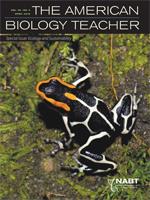As visual creatures, humans sometimes have difficulty understanding how other organisms encounter their environments through nonvisual means. Many organisms rely predominantly or exclusively on senses other than sight, including olfaction, chemoreception, and thermoreception. This lesson will give high school students insights into how other organisms encounter their environment, the benefits and limitations of different senses, and why we should be aware of other organisms' perceptions. Educating students about sensory ecology introduces fundamental concepts in physiology, ecology, and animal behavior. Students will learn a new vocabulary term (umwelt) and about the sensory ecology of other organisms via an active-participation presentation, collect and analyze data on sensory disruption of classmates, and put their new knowledge to work by brainstorming ways in which human activity interacts with the sensory ecology of wildlife through case studies (Common Core State Standard HS-LS2-7).
How to translate text using browser tools
1 April 2016
Understanding Sensory Ecology
Megan Mayo,
Jan Ng
ACCESS THE FULL ARTICLE
It is not available for individual sale.
This article is only available to subscribers.
It is not available for individual sale.
It is not available for individual sale.

The American Biology Teacher
Vol. 78 • No. 4
April 2016
Vol. 78 • No. 4
April 2016
animal behavior
environmental science.
sensory ecology
umwelt




